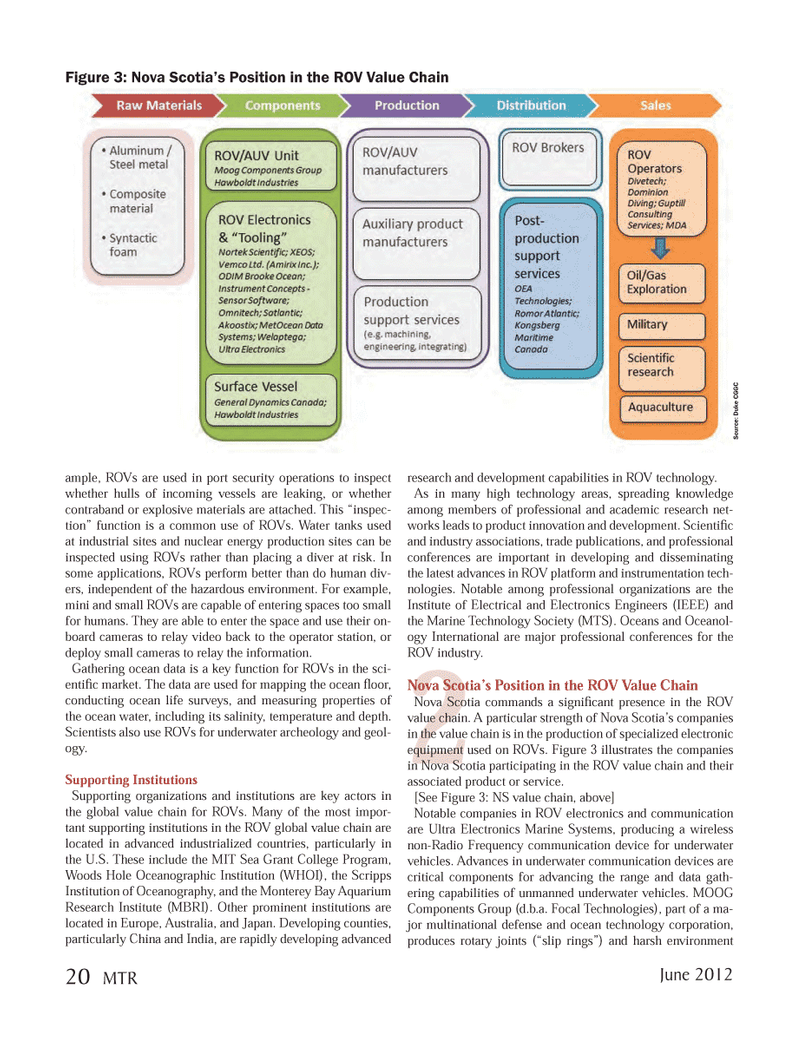
Page 20: of Marine Technology Magazine (June 2012)
AUV Arctic Operations
Read this page in Pdf, Flash or Html5 edition of June 2012 Marine Technology Magazine
2ample, ROVs are used in port security operations to inspect whether hulls of incoming vessels are leaking, or whether contraband or explosive materials are attached. This ?inspec- tion? function is a common use of ROVs. Water tanks used at industrial sites and nuclear energy production sites can be inspected using ROVs rather than placing a diver at risk. In some applications, ROVs perform better than do human div- ers, independent of the hazardous environment. For example, mini and small ROVs are capable of entering spaces too small for humans. They are able to enter the space and use their on- board cameras to relay video back to the operator station, or deploy small cameras to relay the information. Gathering ocean data is a key function for ROVs in the sci- enti c market. The data are used for mapping the ocean oor, conducting ocean life surveys, and measuring properties of the ocean water, including its salinity, temperature and depth. Scientists also use ROVs for underwater archeology and geol- ogy. Supporting InstitutionsSupporting organizations and institutions are key actors in the global value chain for ROVs. Many of the most impor- tant supporting institutions in the ROV global value chain are located in advanced industrialized countries, particularly in the U.S. These include the MIT Sea Grant College Program, Woods Hole Oceanographic Institution (WHOI), the Scripps Institution of Oceanography, and the Monterey Bay Aquarium Research Institute (MBRI). Other prominent institutions are located in Europe, Australia, and Japan. Developing counties, particularly China and India, are rapidly developing advanced research and development capabilities in ROV technology. As in many high technology areas, spreading knowledge among members of professional and academic research net-works leads to product innovation and development. Scienti c and industry associations, trade publications, and professional conferences are important in developing and disseminating the latest advances in ROV platform and instrumentation tech- nologies. Notable among professional organizations are the Institute of Electrical and Electronics Engineers (IEEE) and the Marine Technology Society (MTS). Oceans and Oceanol- ogy International are major professional conferences for the ROV industry. Nova Scotia?s Position in the ROV Value Chain Nova Scotia commands a signi cant presence in the ROV value chain. A particular strength of Nova Scotia?s companies in the value chain is in the production of specialized electronic equipment used on ROVs. Figure 3 illustrates the companies in Nova Scotia participating in the ROV value chain and their associated product or service.[See Figure 3: NS value chain, above] Notable companies in ROV electronics and communication are Ultra Electronics Marine Systems, producing a wireless non-Radio Frequency communication device for underwater vehicles. Advances in underwater communication devices are critical components for advancing the range and data gath- ering capabilities of unmanned underwater vehicles. MOOG Components Group (d.b.a. Focal Technologies), part of a ma- jor multinational defense and ocean technology corporation, produces rotary joints (?slip rings?) and harsh environment Figure 3: Nova Scotia?s Position in the ROV Value Chain Source: Duke CGGC 20 MTRJune 2012MTR #5 (18-33).indd 20MTR #5 (18-33).indd 205/31/2012 9:52:52 AM5/31/2012 9:52:52 AM

 19
19

 21
21
